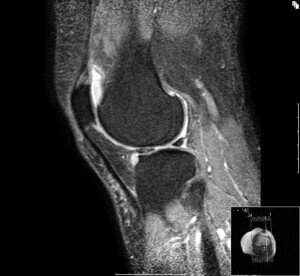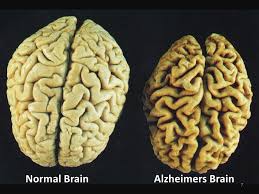Can Low Thyroid Cause Metal Smelling Breath?

Has your breath been smelling like metal lately?
Perhaps you even TASTE metal for no reason and wonder if a low thyroid could be the cause.
Hypothyroidism, or underactive thyroid, can cause numerous symptoms. (more…)
Can a Low Thyroid Cause Missed Periods?

If you’ve been missing some periods lately but are too young to suspect perimenopause, have you considered low thyroid as a possible cause?
But keep in mind that even a woman of perimenopausal or premenopausal age can still develop underactive thyroid disease. (more…)
Can Two Periods in One Month Mean the Start of Menopause?

There are a few causes of two periods in one month and many women believe that menopause is one of them.
However, what seems to be two periods in one month may be something more sinister… (more…)
Is Pasta Really As Bad As Its Reputation for Fat Gain?

Looks like all the backlash against pasta over the years as a weight gain food has been undeserved.
Now research shows that pasta, which has a low glycemic index, isn’t bad at all for people trying to lose fat.
Foods with a low glycemic index cause a slower rise in blood sugar than do foods that are rated high.
Research from St. Michael’s Hospital
Researchers identified 30 randomized control trials that involved nearly 2,500 pasta eaters — people who did not regularly consume other forms of carbohydrates — as part of a low glycemic diet.
“The study found that pasta didn’t contribute to weight gain or increase in body fat,” says the lead author, Dr. John Sievenpiper, in the paper, which appears in the April 2018 British Medical Journal Open.
“In fact analysis actually showed a small weight loss,” continues the paper. “So contrary to concerns, perhaps pasta can be part of a healthy diet such as a low GI diet.”
Better Type of Pasta
Ideally you’ll want the pasta to be fresh-made at home rather than in a microwavable frozen box or tub that’s full of additives — including added sugars!
The Study
The study subjects averaged 3.3 pasta servings per week instead of other carb foods, wherein one serving = about half a cup of cooked pasta.
The subjects lost about half a kilogram of weight over an average follow-up of 12 weeks.
Context Must Be Considered
The report points out that the results apply to pasta eaten with other low glycemic foods as a part of a low glycemic diet – rather than heaps and heaps of pasta eaten along with lots of high glycemic carbs or other kinds of diets.
“As a rule of thumb, everything should be eaten in moderation,” says Shana Spence, MS, RDN, CDN, a registered dietitian nutritionist based in New York, who was not involved in the study.
Moderation for pasta would mean a cup or two, depending on the circumstances.
For instance if you killed it at the gym with an intense and heavy weight workout, two cups of pasta (with protein!) would be appropriate.
For a late evening snack, one cup is better.
“There are also so many different types of healthier pasta options available now, it really should not be counted as something negative anymore,” continues Spence.
“There is whole wheat pasta that has more fiber than its white version. There are also protein versions now made with legumes such as chickpeas.
“There is also nothing wrong with eating the original white pasta.
“Just be mindful of portions especially when you’re eating out at restaurants since they tend to provide double and triple the size.”
 Shana Spence of The Nutrition Tea is committed to providing trending information and nutrition facts covering a wide range including nutrition for heart disease and diabetes, pediatric nutrition and healthful lifestyles.
Shana Spence of The Nutrition Tea is committed to providing trending information and nutrition facts covering a wide range including nutrition for heart disease and diabetes, pediatric nutrition and healthful lifestyles.
 Lorra Garrick is a former personal trainer certified by the American Council on Exercise. At Bally Total Fitness she trained clients of all ages for fat loss, muscle building, fitness and improved health.
Lorra Garrick is a former personal trainer certified by the American Council on Exercise. At Bally Total Fitness she trained clients of all ages for fat loss, muscle building, fitness and improved health.
Source: sciencedaily.com/releases/2018/04/180403085034.htm
Lily’s Stevia Chocolate Bars’ Added Inulin Causes Farting

Lily’s Stevia sweetened chocolate bars may as well be called “fart bars” because their excessive amount of inulin causes flatulence.
One bar contains 22 to 24 grams of fiber. (more…)
8 Exercises Fat People Can Do As Well As Thin People

If you think you’re too fat to work out at the gym, you’re so wrong, as there are 8 REAL exercises that very big people can do as well as thin people. (more…)
Relief of Osteoarthritis Knee Pain without Drugs, Surgery

A breakthrough shows an effective treatment that relieves the pain of osteoarthritis in the knee without drugs or surgery.
The treatment doesn’t even require any hospital stay, recovery time or rehab exercises.
Osteoarthritis is a degenerative condition that involves a progressive wearing down or thinning of the cartilage in the knee joint.
For some patients the result is eventually a bone-on-bone contact, causing a lot of pain just from walking.

Bone-on-bone contact of osteoarthritis. Scuba-limp/Commonswiki
Pain Relief from Knee Osteoarthrits: No Drugs, No Joint Replacement
The simple and painless procedure is called geniculate artery embolization (GAE).
This image-guided treatment blocks arteries in the knee, resulting in less inflammation and therefore less pain.
“Geniculate artery embolization is a relatively new procedure [as of 2022] for treating arthritis pain in the knee,” says Marc F. Matarazzo, MD, a board certified orthopedic surgeon with Total MD Family Medicine & Urgent Care.
“There are several randomized controlled trials currently being conducted.
“This procedure uses a minimally invasive technique to disrupt the blood flow at the site of pain.
“It is thought that this inhibits neovascularization [growth of new blood vessels], leading to the breakdown of tissue and feeding of inflammation and knee osteoarthritis.
“There are some promising initial data regarding its efficacy.
“This should not be confused with geniculate nerve radiofrequency ablation, which is also a minimally invasive treatment for pain related to osteoarthritis of the knee.
“This procedure has a more established track record and has been shown in one study to be superior to NSAIDs and an intra-articular cortisone injection.”
How is GAE done?
• An interventional radiologist inserts a catheter through an incision the size of a pinhole.
• This blocks the very small arteries within the knee’s lining, reducing inflammation caused by the osteoarthritis.
• GAE is an outpatient treatment.
• It takes 45 to 90 minutes.
In a small study by Bagla et al, there were no adverse side effects of the procedure.
After one month, patients continued to report pain relief.
If you’re suffering from the pain of osteoarthritis in your knee, you may want to ask your orthopedic surgeon about geniculate artery embolization.
But keep in mind that GAE is not a cure for the degenerative process of osteoarthritis.
 Dr. Matarazzo specializes in sports medicine and related injuries. He performs minimally invasive and complex reconstructions, and joint replacements, of the shoulder and knee. Dr. Matarazzo is certified in the MAKO robotic-assisted knee replacement system and has 20+ years of orthopedic experience. He has a special interest in cartilage restoration and preservation.
Dr. Matarazzo specializes in sports medicine and related injuries. He performs minimally invasive and complex reconstructions, and joint replacements, of the shoulder and knee. Dr. Matarazzo is certified in the MAKO robotic-assisted knee replacement system and has 20+ years of orthopedic experience. He has a special interest in cartilage restoration and preservation.
 Lorra Garrick has been covering medical, fitness and cybersecurity topics for many years, having written thousands of articles for print magazines and websites, including as a ghostwriter. She’s also a former ACE-certified personal trainer.
Lorra Garrick has been covering medical, fitness and cybersecurity topics for many years, having written thousands of articles for print magazines and websites, including as a ghostwriter. She’s also a former ACE-certified personal trainer.
.
Top image: Depositphotos.com
Alzheimer’s Breakthrough: Prevent Disease with Common Painkiller?

A breakthrough in the prevention of Alzheimer’s disease may be on the horizon, thanks to researchers who believe a common painkiller may prevent this killer from striking. (more…)
Does Slow Walking Actually Damage the Brain (Dementia)?

A study links slow walking with dementia, but what exactly does this mean?
Does slow walking damage brain cells?
The study concludes that slow walking in older adults means a higher risk of dementia, and this includes the ability to think and make sound decisions. (more…)


































































